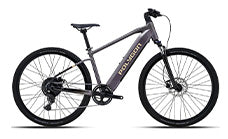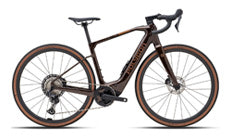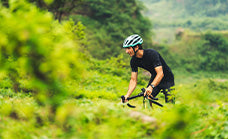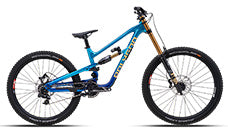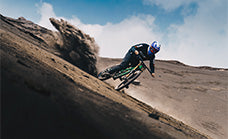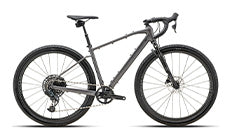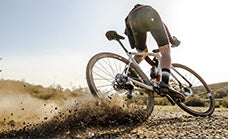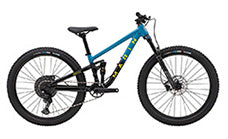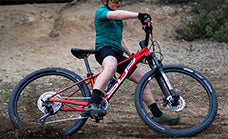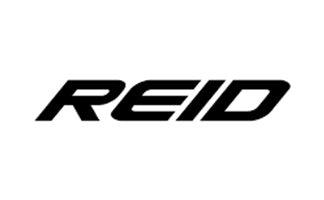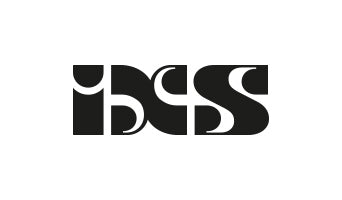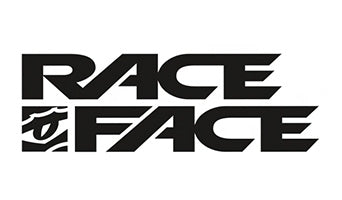Choosing the Right Balance Bike for Your Child
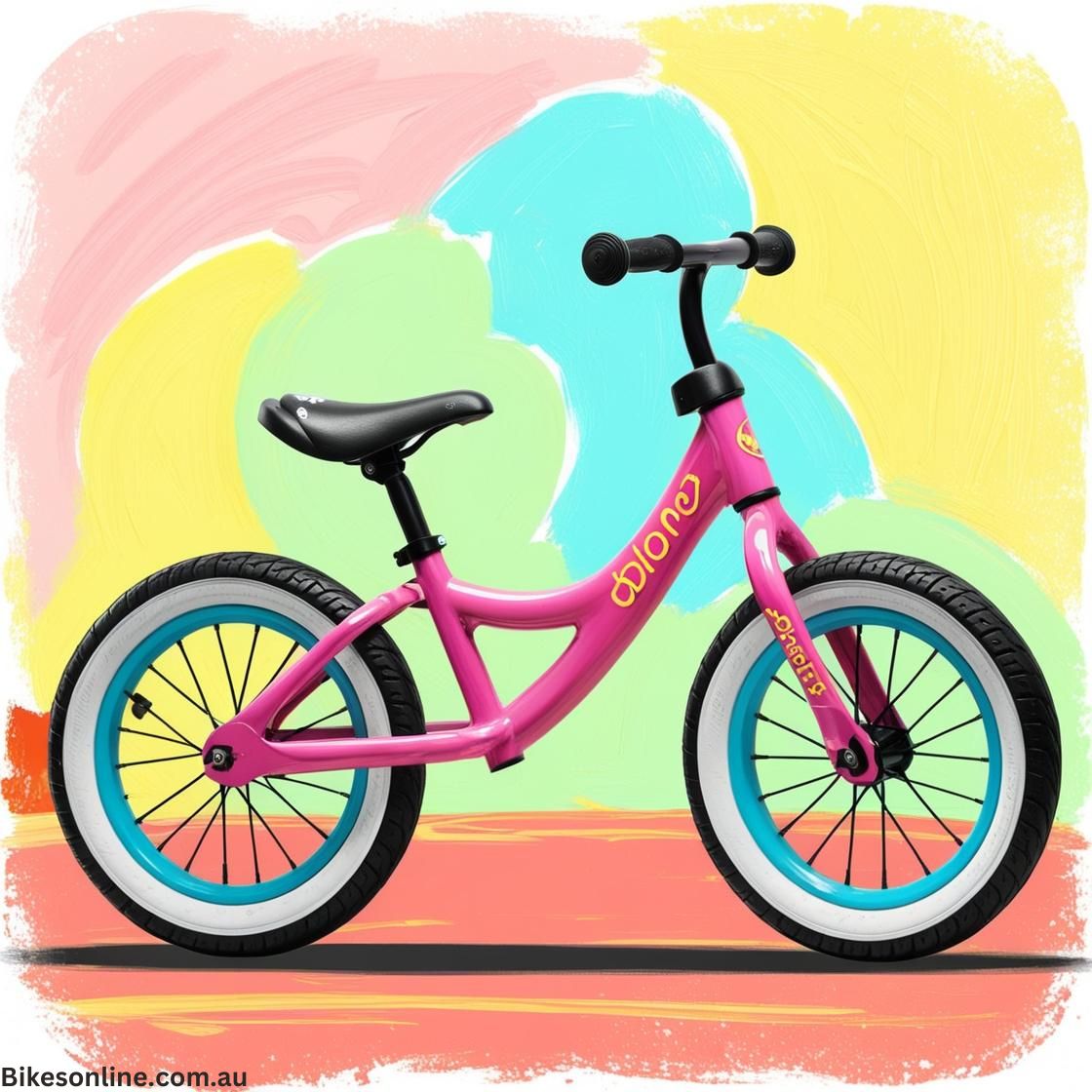
When it comes to setting the foundation for a lifetime of cycling, few tools are as effective and enjoyable as the balance bike. Designed for tots as young as 18 months, these pedal-less bikes do not just add a dose of fun to outdoor play—they also play a pivotal role in developing essential motor skills and building confidence in young riders. By focusing on balance first, rather than pedalling, balance bikes help children learn to steer and maintain equilibrium, which are critical skills for cycling and overall physical coordination.
Selecting the right balance bike is more than a matter of picking a colour or style; it's about finding a fit that aligns with your child's height, comfort, and developmental stage. The right bike ensures that your child can safely manage their ride, giving them just enough challenge to keep improving without overwhelming them. This choice not only affects their ability to enjoy the bike but also impacts their safety and the speed at which their biking skills progress. Let’s delve into how to make the best choice for your child’s first set of wheels, setting them on the path to a lifelong love of cycling.
Table of Contents
- What is a Balance Bike?
- Why Choose a Balance Bike?
- Key Factors to Consider When Buying a Balance Bike
- Best Balance Bikes on the Market
- Accessories and Adjustments
- Making the Right Choice
What is a Balance Bike?
A balance bike is a small, two-wheeled bicycle designed without pedals, gears, or chains. Its primary purpose is to teach children balance and steering, fundamental skills required for cycling. By propelling the bike using their feet, toddlers and young children learn how to maintain balance on two wheels in a natural and intuitive way. The design focuses on simplicity, reducing the complexity and potential intimidation that can come with full-featured bicycles.
Differences Between Balance Bikes and Traditional Bicycles with Stabilisers
Balance bikes differ significantly from traditional bicycles that often come equipped with stabilisers, commonly known as training wheels. Here are some of the key distinctions:
- Learning Focus: Unlike traditional bikes with stabilisers that teach pedalling first, balance bikes focus on developing a child’s balance and coordination first, which are crucial for cycling without assistance.
- Ease of Learning: Children using balance bikes can typically transition to regular pedal bikes faster than those who start with stabilisers. This is because balance bikes teach the essential skill of balancing on two wheels directly, whereas stabilisers can instil a false sense of security and often require re-learning to balance when they are removed.
- Weight and Complexity: Balance bikes are generally lighter and simpler than their traditional counterparts. They lack the heavy pedals and drivetrain components (like chains and sprockets), making them easier for small children to handle and less daunting for beginners.
- Age of Introduction: Balance bikes can be introduced to children as young as 18 months, much earlier than traditional bicycles, which are usually suitable for children aged 3 and upwards when stabilisers can be effectively used.
By foregoing the complexity of pedals, gears, and stabilisers, balance bikes provide a direct and effective route for children to develop the necessary skills for bicycle riding, making the learning process smoother and more enjoyable.
Why Choose a Balance Bike?
Developmental Benefits for Children
Balance bikes are more than just a fun way to spend time outdoors; they offer significant developmental advantages for children. By simplifying the cycling process to its core elements—balancing and steering—these bikes help young riders develop physical skills such as coordination and agility. Moreover, balance bikes enhance spatial awareness and promote early exercise habits, contributing to overall physical health. Psychologically, mastering a balance bike can boost a child's confidence and independence, providing them with the courage to face new challenges.
How Balance Bikes Ease the Transition to Pedal Bikes
One of the biggest advantages of starting a child on a balance bike is the smooth transition to pedal bicycles. Children who learn to ride a balance bike typically do not require stabilisers when transitioning to pedal bikes, as they have already mastered balancing on two wheels. This can eliminate the dependency on stabilisers, which can actually hinder the development of balancing skills. Children from balance bikes generally find it easier to learn pedalling, as they only need to add this one skill to their already developed balancing abilities.
Key Factors to Consider When Buying a Balance Bike
When selecting a balance bike, several factors should be considered to ensure it is the right fit for your child and will provide a safe and enjoyable learning experience. Here’s what to keep in mind:
Size and Fit
The size of the balance bike is crucial for safety and comfort. A bike that is too large or too small can be difficult for a child to control and may discourage them from riding. Ensure the bike’s height matches your child's inseam measurement, allowing them to keep both feet flat on the ground for stability.
Material
Balance bikes come in various materials, each offering different benefits:
- Wood: Eco-friendly and aesthetically pleasing but less adjustable and potentially less durable in wet weather.
- Metal: Typically aluminum or steel, which are durable and often adjustable, though heavier than wood.
- Plastic: Lightweight and often more affordable, ideal for younger children, but may not withstand heavy use or older children.
Tyre Type
The type of tyres can affect the bike's usability on different surfaces and its overall durability:
- Foam tyres: Puncture-proof and low maintenance but provide less traction.
- Rubber tyres: Offer more traction and durability, suitable for various terrains.
- Pneumatic tyres: Air-filled and provide superior cushioning and traction, making them ideal for rougher terrains but require more maintenance.
Weight
The weight of the bike is important for young children to be able to handle the bike easily. A lighter bike is preferable as it is easier for a child to manoeuvre and carry, allowing for longer riding sessions without fatigue.
Considering these factors will help you choose a balance bike that not only fits your child but also encourages a positive and productive learning experience.
Size and Fit
Choosing the correct size and fit for a balance bike is essential to ensure that your child enjoys a safe and comfortable riding experience. A properly sized bike helps in preventing accidents and makes learning to ride more enjoyable.
Importance of the Correct Bike Size for Safety and Comfort
A balance bike that fits well will have a seat that allows the child to have both feet flat on the ground while sitting. This positioning is crucial for safety as it gives the child stability and control when they are stopping and starting. It also makes it easier for them to push off the ground to gain momentum. A bike that is too large or too small can lead to poor posture, discomfort, and difficulty in handling, which can be discouraging and even dangerous for young riders.
Tips on Measuring Your Child for the Right Balance Bike Size
To ensure you select the right size balance bike for your child, follow these tips:
- Measure the Inseam: This is the most reliable measurement for choosing a balance bike. Have your child stand against a wall, wearing shoes they'd likely ride in, and measure from the floor to their crotch. The ideal bike will have a seat height about 1-1.5 inches below this measurement to start with, allowing them to push off the ground comfortably.
- Consider Wheel Size: Balance bikes typically come in wheel sizes ranging from 10 inches to 16 inches. Smaller wheels are generally suitable for younger or smaller children, while larger wheels may be more appropriate for older children or those who are taller.
- Adjustability: Look for a bike with an adjustable seat and, ideally, adjustable handlebars. This allows the bike to grow with your child, extending its usability and ensuring it remains comfortable as they develop.
- Trial Runs: If possible, have your child test out the bike before purchasing to see if they can handle it comfortably. They should be able to sit on the saddle with their knees slightly bent when the feet are flat on the ground.
- Consult Size Charts: Most manufacturers provide size charts to help you choose the right bike based on your child’s height and inseam. Use these as a guide to narrow down your options.
By carefully measuring and choosing a bike that fits these criteria, you can provide your child with a balanced bike that will not only be a joy to ride but will also help them safely develop their cycling skills.
Material Choices
When selecting a balanced bike, the material from which it is made is a key factor to consider, as it affects the weight, durability, and overall handling of the bike. The three most common materials used are wood, metal, and plastic. Each material offers distinct advantages and disadvantages.
Wood
Pros:
- Aesthetically Pleasing: Wooden balance bikes are often admired for their classic, timeless look.
- Eco-Friendly: Typically made from renewable resources, wooden bikes can be a more environmentally friendly choice.
- Lightweight: Wood is relatively light, making the bike easier for young children to maneuver.
Cons:
- Durability Concerns: Wood may not withstand wet weather as well as metal or plastic, and can be prone to wear and damage over time.
- Limited Adjustability: Wooden bikes often offer less flexibility in adjusting seat and handlebar heights compared to metal or plastic models.
Metal (Aluminium and Steel)
Pros:
- High Durability: Metal bikes are robust and can endure rough handling, making them a long-lasting choice.
- Adjustability: Many metal balance bikes feature adjustable seats and handlebars, which accommodate growing children.
- Weight Options: Depending on the type of metal, bikes can be designed to be ultra-light (aluminium) or slightly heavier but more stable (steel).
Cons:
- Potential for Rust: Metal bikes can rust if not properly cared for, especially when exposed to moisture.
- Heavier Than Wood and Plastic: Steel bikes, in particular, can be heavier, which might be challenging for smaller children to handle.
Plastic
Pros:
- Very Lightweight: Plastic is the lightest material option, ideal for the youngest riders who might struggle with heavier bikes.
- Maintenance-Free: Plastic bikes are not prone to rust and require less maintenance than wood or metal bikes.
- Cost-Effective: Generally, plastic balance bikes are the most affordable option.
Cons:
- Durability: While plastic is durable in terms of weather resistance, it may not endure the physical demands of rougher play as effectively as metal.
- Less Stable: Lighter bikes, while easier for small children to handle, can be less stable at higher speeds or on uneven surfaces.
Impact of Material on Weight and Durability
The choice of material directly influences the weight of the bike, which affects how easily a child can control and transport it. Lighter bikes are easier for young children to handle, but stability might be compromised, especially on uneven terrain. Meanwhile, heavier bikes offer more stability but can be more difficult for a child to manage.
Durability is also a critical consideration. Metal bikes, while potentially heavier, offer longevity and can withstand rougher treatment, making them a potentially better long-term investment. Wood and plastic, while offering certain aesthetic and cost benefits, might not fare as well in harsh weather or after prolonged use.
Tyre Types
The type of tyres on a balance bike can significantly affect the bike's performance, comfort, and suitability for different terrains. The three main types of tyres found on balance bikes are foam, rubber, and pneumatic tyres. Each type has its characteristics that cater to different riding conditions and preferences.
Foam Tyres
Pros:
- Puncture-Proof: Foam tyres are solid and not filled with air, which means they cannot be punctured or go flat.
- Maintenance-Free: They require virtually no maintenance, making them a convenient choice for casual riding.
- Lightweight: Foam tyres are lighter than pneumatic tyres, which can make the bike easier for a child to handle.
Cons:
- Less Traction: They generally offer less traction than rubber or pneumatic tyres, which can affect performance on slippery or uneven surfaces.
- Less Shock Absorption: Foam tyres do not absorb bumps and shocks as well as pneumatic tyres, which may result in a less comfortable ride on rough terrain.
Rubber Tyres
Pros:
- More Traction: Rubber tyres provide better grip than foam tyres, making them suitable for a variety of surfaces.
- Durable: They are more durable than foam tyres and can handle a wider range of outdoor conditions without wearing out quickly.
- Moderate Shock Absorption: While not as cushioning as pneumatic tyres, rubber tyres still offer a smoother ride than foam.
Cons:
- Heavier: Rubber tyres are generally heavier than foam, which could make the bike more challenging for very young or small children to manage.
- Puncture Risks: Unlike foam, rubber tyres can still be punctured, though they are typically quite robust.
Pneumatic Tyres
Pros:
- Superior Shock Absorption: Pneumatic tyres, filled with air, provide the best shock absorption, delivering a comfortable ride even on very rough or uneven terrain.
- Adjustable Pressure: The tyre pressure can be adjusted to suit different weights and riding conditions, providing a customised riding experience.
- Excellent Traction: These tyres offer the best traction, making them ideal for adventurous riders who may venture onto different types of surfaces.
Cons:
- Maintenance Required: Pneumatic tyres can puncture and require regular air pressure checks to maintain performance.
- Weight: They are typically the heaviest tyre option, which might impact a young child's ability to handle the bike.
Recommendations Based on Terrain and Usage
- Indoor or Smooth Surfaces: Foam tyres are sufficient for indoor use or on smooth, paved surfaces where traction and shock absorption are less critical.
- Parks and Paved Outdoor Areas: Rubber tyres are recommended for general outdoor use in parks or on paved paths where some bumps and varied surfaces might be encountered. They offer a good balance between weight and performance.
- Rough, Uneven Terrain: Pneumatic tyres are the best choice for children who will be riding on rough terrain, such as gravel, grass, or uneven paths. Their superior shock absorption and traction provide the safest and most comfortable ride under these conditions.
Choosing the right tyre type for a balance bike will depend on where the bike will be used most frequently and what kind of riding experience is desired. Each type offers distinct advantages and should be matched to the child's environment and riding style.
Weight
The weight of a balance bike is a crucial aspect to consider as it directly influences a child's ability to use and enjoy the bike. A bike that is too heavy can be cumbersome for a child to maneuver, which may hinder their ability to learn effectively and enjoy riding. Conversely, a bike that is too light might not offer enough stability, especially at higher speeds or on uneven surfaces.
The Significance of Bike Weight for a Child's Ease of Use
Weight plays a significant role in how easily a child can control the bike. A lighter bike is easier for children to handle, especially when they need to pick it up, push it along, or steer. It's important for children to feel confident in their ability to manage their bike, as this confidence directly impacts their willingness to ride and their ability to develop necessary skills like balancing and steering.
Ideal Weight Ranges for Balance Bikes
The ideal weight of a balance bike typically depends on the size and strength of the child, but there are general guidelines that can help parents choose the best option:
- Toddlers (Ages 18 months to 3 years): For younger children, bikes weighing around 3 to 5 kg (6.6 to 11 lbs) are ideal. These bikes are easy enough for small children to move and control but still provide the stability they need to ride safely.
- Older Children (Ages 4 to 6 years): Children in this age group can handle slightly heavier bikes. Bikes weighing between 4 to 6 kg (8.8 to 13.2 lbs) offer a good balance between control and durability, providing the necessary stability without being too cumbersome.
When considering weight, it's also important to think about the materials from which the bike is made. Metal bikes can be heavier but offer durability and longevity, while plastic and wood provide lighter options that might be easier for younger children to manage initially.
In conclusion, selecting a balance bike with the appropriate weight enhances a child's learning experience, ensuring they can handle the bike comfortably and safely. Parents should aim for the lightest bike that still offers the durability and stability necessary for their child's needs and the environments in which the bike will be used.
Safety Features
Safety is paramount when it comes to children's toys and equipment, especially balance bikes which are used by very young children at a crucial stage of their development. Ensuring that a balance bike is equipped with appropriate safety features can prevent injuries and provide peace of mind for parents.
Essential Safety Features
- Handlebar Grips: Proper grips on the handlebars are essential for safety. They should be made of a non-slip material and be secure on the handlebars to prevent hands from slipping off, especially in wet or damp conditions. Additionally, the grips should come with bumpers or end caps to prevent injuries if the child falls on the handlebars.
- Brake Systems: While not all balance bikes come with a brake system, having one can be a significant safety feature, especially for older children or those riding in hilly areas. Brakes allow the child to stop the bike without needing to drag their feet on the ground, which can help prevent accidents and shoe wear. The brake should be easy to reach and operate by small hands.
Importance of Non-Toxic Materials and Certifications
- Non-Toxic Materials: Since children are prone to putting things in their mouths, it’s crucial that the materials used in their balance bikes are non-toxic. This includes the paint, metal, plastic, and any other components. Non-toxic materials ensure that the bike is safe for the child’s health and well-being.
- Certifications: Look for balance bikes that have been certified by recognized standards organizations. These certifications mean that the bike has passed safety tests and meets specific safety standards. Common certifications include those from the Consumer Product Safety Commission (CPSC) in the U.S. or the equivalent standards in other countries.
Ensuring that the balance bike is made from non-toxic materials and has the necessary safety certifications offers an additional layer of safety and reassurance that the product is safe for use by children.
Best Balance Bikes on the Market
Choosing the best balance bike for your child involves considering various models to find one that best suits your child's needs, skill level, and personal preferences. Below, we review some of the most popular balance bike models on the market, highlighting their unique features and the age groups they are most suitable for.
1. Berg Biky Cross w-Handbrake - Balance Bike
Designed for young adventurers aged 2 to 5 years, the BERG Balance Bike with Brake offers the perfect blend of safety, comfort, and fun. It's not just a way to get around; it's a developmental tool that helps foster essential motor skills and encourage a lifelong passion for cycling.
Key Features:
- Durable Construction: Crafted from lightweight magnesium, this bike is robust enough to handle outdoor play while remaining easy for little ones to maneuver.
- Safety First: The inclusion of a handbrake teaches young riders to stop safely and efficiently, boosting their confidence as they explore.
- Adjustable Design: With an easily adjustable seat and handlebars, the bike grows with your child, providing a comfortable fit throughout their early cycling years.
- Ergonomic Comfort: Tailored for small riders, it features non-slip handles and a wide tyre base, enhancing both stability and grip for safer rides.
Developmental Benefits:
The BERG Balance Bike focuses on promoting balance and coordination without the complexities of pedaling. This approach not only builds a child's confidence but also prepares them for a smoother transition to pedal bikes, potentially bypassing the need for training wheels.
Encouraging Outdoor Play:
Its vibrant colors and sleek design are sure to capture your child's imagination, drawing them outdoors. This move away from screen time not only nurtures a love for nature but also instills healthy physical activity habits from a young age.
The BERG Balance Bike with Brake is more than just a bicycle; it's an investment in your child's growth and independence. By combining safety features with a fun design, it ensures that every ride is not just enjoyable but also a step towards future cycling adventures.
2. Berg Biky Retro - Balance Bike
The Berg Biky Retro balance bike is designed for young children eager to experience the joy of cycling. It combines a classic design with modern safety features, making it a stylish yet practical choice for kids learning to balance on two wheels.
Key Features:
- Classic Design: The Berg Biky Retro features a vintage-inspired look that stands out with its timeless appeal. This design not only looks great but also encourages children to ride with enthusiasm.
- Lightweight Frame: Constructed from durable materials, the frame is lightweight, making it easy for small children to handle and maneuver.
- Adjustable Seat and Handlebars: To accommodate growing children, both the seat and handlebars can be adjusted. This ensures a comfortable and ergonomic fit as your child grows.
- Safety Features: Equipped with a low step-through frame for easy access and safety. The bike also includes rounded components to minimize the risk of injury and ensure a safer ride.
Ideal for Learning:
The Berg Biky Retro is designed to help children from ages 2 to 5 develop their balancing skills without the distraction of pedals or training wheels. This focus on balance first makes the transition to pedal bikes smoother and faster.
Encouraging Active Play:
With its attractive retro style and comfortable design, the Berg Biky Retro encourages kids to engage in active outdoor play. Riding this balance bike not only promotes physical activity but also helps in developing motor skills, coordination, and confidence at an early age.
The Berg Biky Retro balance bike is an excellent choice for parents looking to introduce their children to cycling in a fun, safe, and stylish way. Its classic design paired with modern adjustments offers lasting appeal and functionality as your child masters the art of balance and prepares for future cycling adventures.
3. Berg Biky Cross - Balance Bike
Overview of the Berg Biky Cross - Balance Bike
The Berg Biky Cross balance bike is a rugged and stylish choice for young adventurers ready to explore varied terrains. Designed with durability and child-friendly ergonomics in mind, this bike is perfect for children looking to develop their balancing skills in a more dynamic setting.
Key Features:
- Robust Construction: Built to withstand the challenges of more adventurous terrains, the Berg Biky Cross features a sturdy frame that ensures durability and stability.
- Safety Enhancements: This bike includes a handbrake system, which is not always common on balance bikes. The handbrake helps children learn to control their speed and stop safely, adding an extra layer of safety during rides.
- Adjustable Seat and Handlebars: As with most high-quality balance bikes, the seat and handlebars on the Berg Biky Cross can be adjusted. This adaptability allows the bike to grow with your child, ensuring several years of use.
- Terrain-Ready Tires: Equipped with thick, knobby tires, the Berg Biky Cross is ideal for handling rough surfaces like dirt tracks, grass, and gravel, providing a smooth and stable ride across various landscapes.
Ideal for Active Play:
The Berg Biky Cross encourages outdoor play with its capability to tackle different types of ground conditions. It’s perfect for kids who are more physically active and enjoy exploring outside. This bike not only promotes physical fitness but also enhances motor skills and spatial awareness.
Developmental Benefits:
By focusing on balance first, the Berg Biky Cross helps young riders develop the necessary skills for more complex biking tasks earlier in life. The transition to pedal bikes becomes easier for children who have trained on balance bikes, often eliminating the need for training wheels.
The Berg Biky Cross - Balance Bike is an excellent investment for parents seeking a safe, durable, and adaptable bike that can keep up with their adventurous child. With its robust design and safety features, it offers peace of mind while providing a fun and beneficial tool for children's physical and motor development.
Accessories and Adjustments
When equipping a child with a balance bike, it's not just about the bike itself—accessories and the ability to adjust the bike are crucial for enhancing both comfort and functionality. These additional components can significantly improve the riding experience for young cyclists and ensure the bike grows with them.
Optional Accessories for Comfort and Functionality
- Helmets: Safety first—helmets are the most crucial accessory for any cyclist, especially young children. Ensure the helmet is appropriately sized and meets safety standards to protect your child in case of falls or collisions.
- Knee Pads and Elbow Pads: For extra protection, consider knee and elbow pads, particularly for children who are just learning to ride or those who are more adventurous. These can prevent scrapes and bruises, making the learning process less intimidating and painful.
- Gloves: Small hands might need gloves, not just for warmth in cooler weather, but also to improve grip and prevent blisters from long periods of riding.
- Bell or Horn: Adding a bell or horn can make riding more fun for the child and also teaches them about signaling their presence, which is a valuable safety habit.
- Adjustable Seats and Handlebars: Adjustable features are essential as they allow the bike to be modified to fit the child perfectly as they grow. An adjustable seat ensures that a child can always reach the ground with their feet, which is crucial for balance bike riders. Adjustable handlebars can be tweaked to improve comfort and ensure proper riding posture over time.
Importance of Adjustable Features for Growing Children
The ability to adjust the bike is not just about extending its usage as the child grows; it also plays a significant role in maintaining comfort and ergonomics. Proper posture on a bike is critical to avoid strain or injuries, and with children growing quickly, having a bike that can adapt to their changing height and limb lengths is invaluable. Here’s why adjustability is essential:
- Longevity of Use: A balance bike with adjustable features can be used for several years as it can be modified to accommodate a growing child. This makes it a more sustainable and cost-effective option for parents.
- Improved Skill Development: A bike that fits well encourages better riding skills. If the bike grows with the child, they can continue to refine their balance and coordination without being hindered by a bike that has become too small.
- Increased Comfort and Safety: Adjusting the bike to fit the child’s current size helps prevent discomfort and maintains safety as they ride. A well-fitted bike reduces the risk of falls and makes it easier for the child to control the bike.
In conclusion, choosing a balance bike with adjustable features and equipping it with the right accessories can greatly enhance the riding experience. These enhancements not only make the bike more enjoyable and safe to use but also provide a flexible, long-term option for young riders as they grow and develop their cycling skills.
Making the Right Choice
Selecting the right balance bike involves more than just picking a color or style; it's about understanding your child's needs and ensuring the bike supports their development and enjoyment. Here's a summary of the key considerations to help you choose the best balance bike for your child.
Summary of Key Considerations
- Size and Fit: Ensure the bike's seat height is appropriate for your child’s inseam measurement. The right fit allows your child to touch the ground with both feet, providing stability and confidence as they ride.
- Material: Choose a material that suits your practical needs and preferences. Consider the weight, durability, and maintenance requirements of different materials like wood, metal, and plastic.
- Tyre Type: Depending on where your child will be riding (indoors, parks, rough terrains), select a tyre type that offers the appropriate traction and comfort. Pneumatic tyres are best for rough terrains, while foam tyres might suffice for indoor or smooth surfaces.
- Weight: A lighter bike can be easier for your child to handle and carry, enhancing their ability to enjoy riding and learn quickly. However, ensure it also provides enough stability.
- Safety Features: Look for essential safety features such as non-slip handlebar grips, effective brake systems, and non-toxic materials. These features will keep your child safe as they learn and explore.
- Adjustability: Adjustable seats and handlebars can greatly extend the lifespan of the balance bike and ensure it remains comfortable for your child as they grow.
Encouraging Child Involvement in the Selection Process
Involving your child in the selection process of their balance bike can significantly enhance their enthusiasm and commitment to learning to ride. Here’s how you can involve them:
- Let Them Choose the Design: Allow your child to pick the color or theme of the bike. Whether they want a bike in their favorite color or one that resembles a bike from a beloved cartoon, having a say can make them feel more connected to it.
- Include Them in the Fitting Process: When testing different bikes, encourage your child to get on and see how well they can reach the ground and handle the bike. Their comfort with the fit can be a good indicator of the right choice.
- Discuss the Features: Explain the different features and benefits of the bikes you consider. This can be a great educational moment and help them understand the importance of safety and functionality.
- Build Anticipation and Ownership: By being part of the decision-making process, children develop a sense of ownership over their bike, which can motivate them to use it more and take better care of it.
By following these guidelines and involving your child in the selection process, you can ensure that the balance bike you choose is not only a tool for physical development but also a source of joy and pride for your little one. This approach helps foster a positive first experience with cycling that can inspire a lifelong passion for the activity.
Conclusion
Choosing the right balance bike for your child is a decision that can significantly influence their early experiences with cycling. This guide has provided a comprehensive overview of the factors you should consider to ensure you select a bike that not only fits well but also supports your child's developmental needs and riding preferences.


